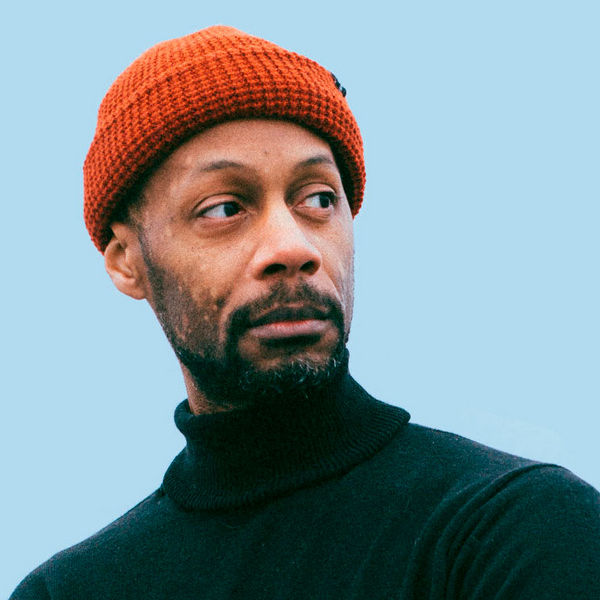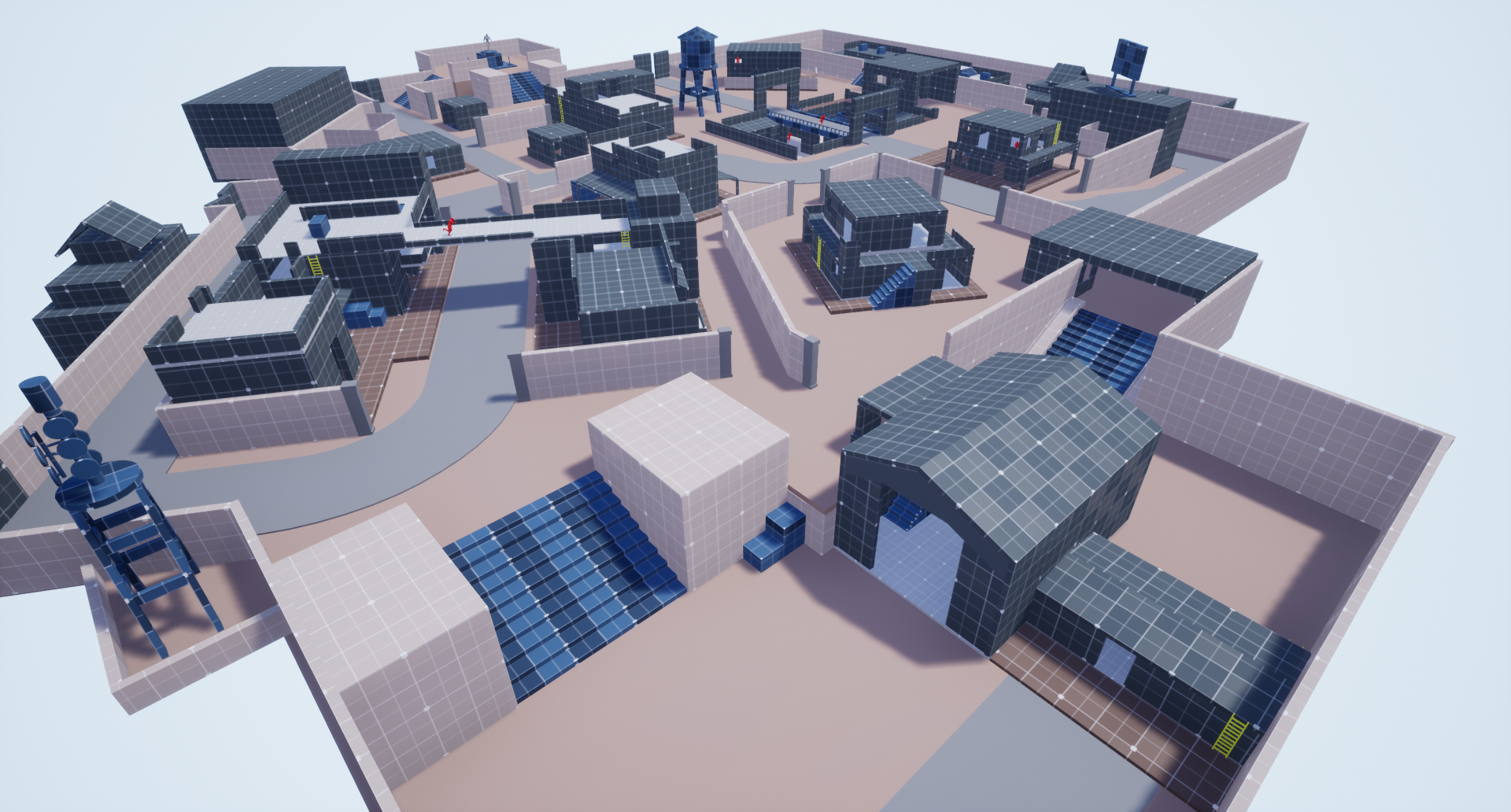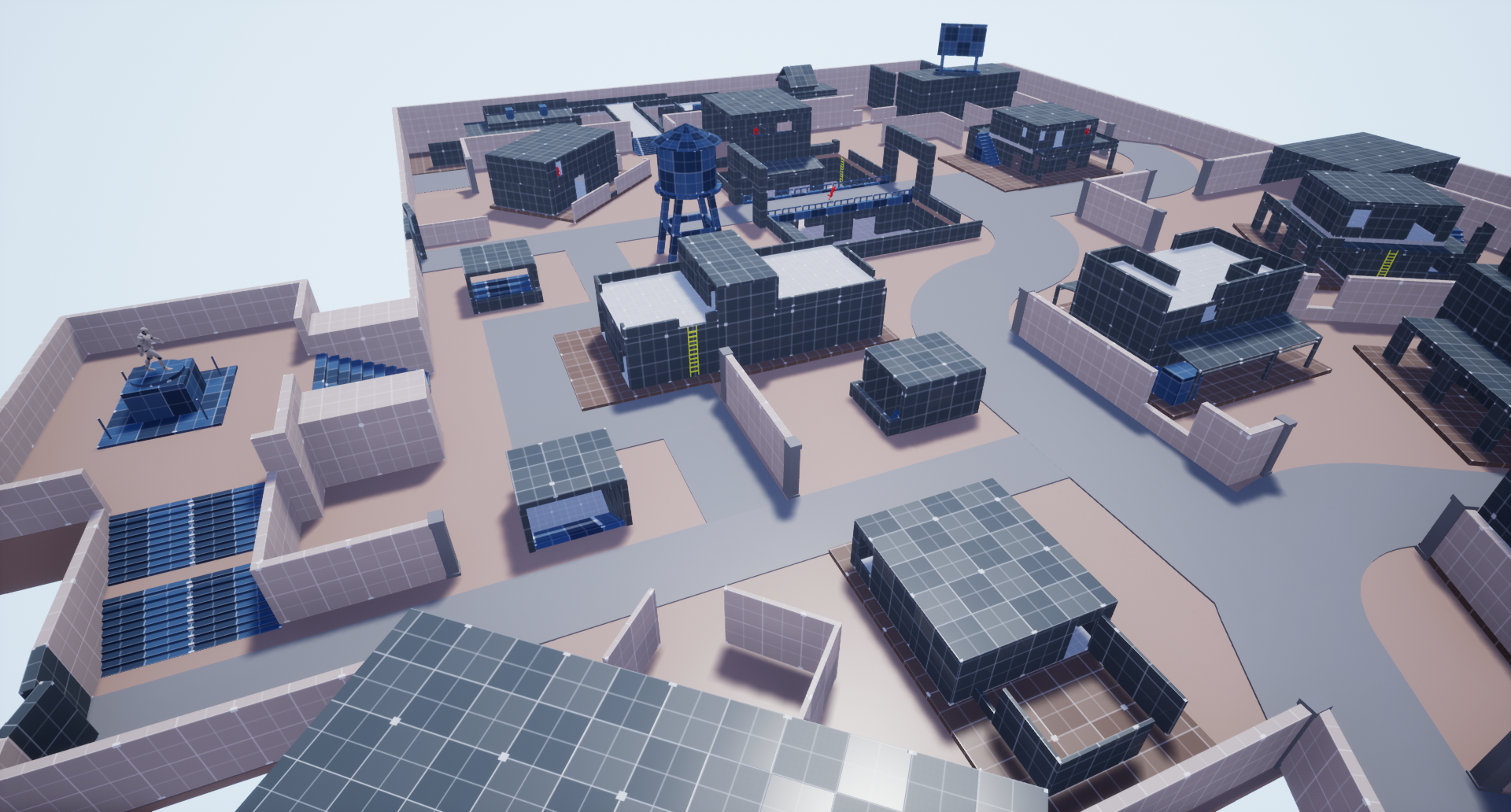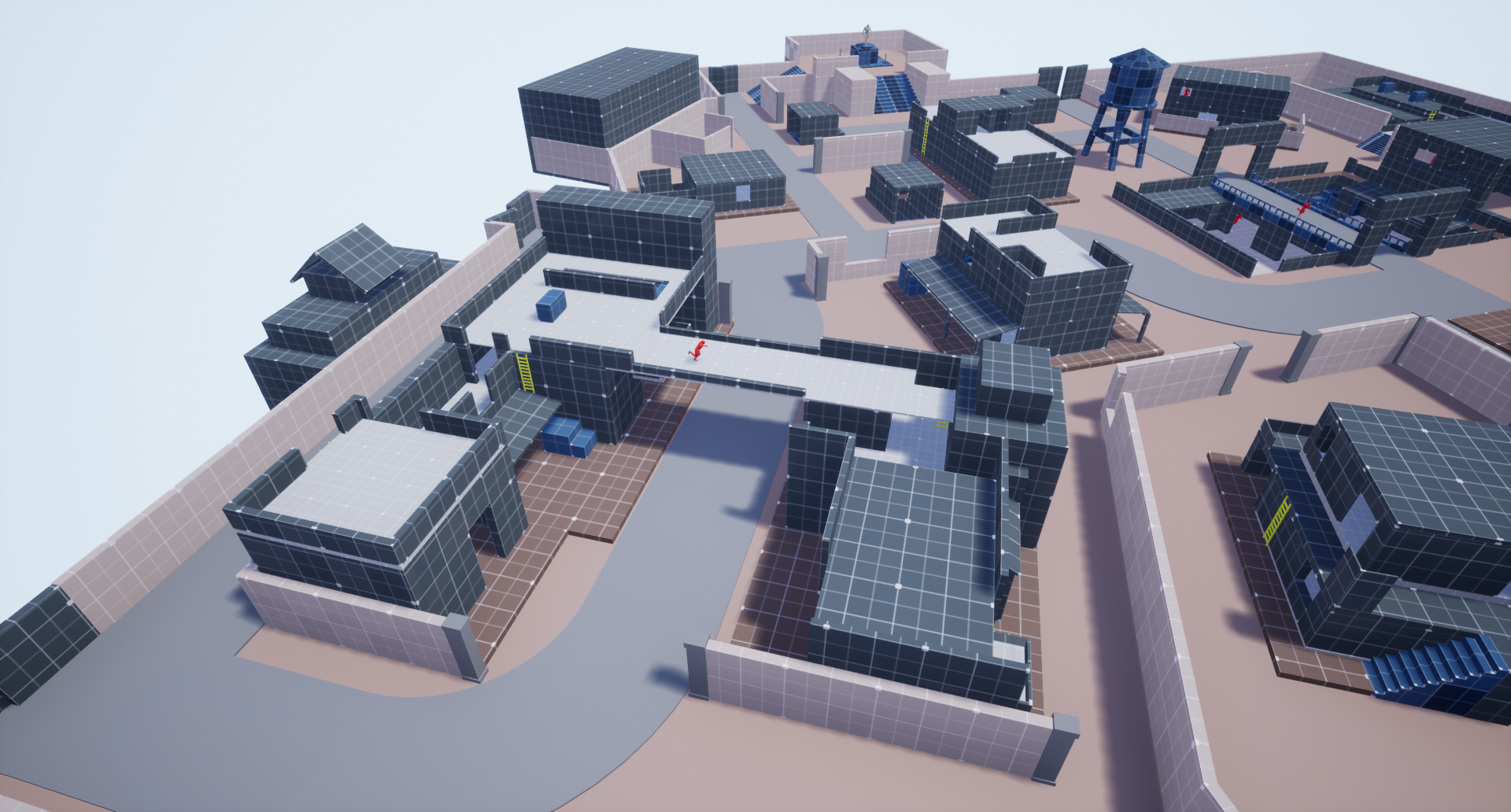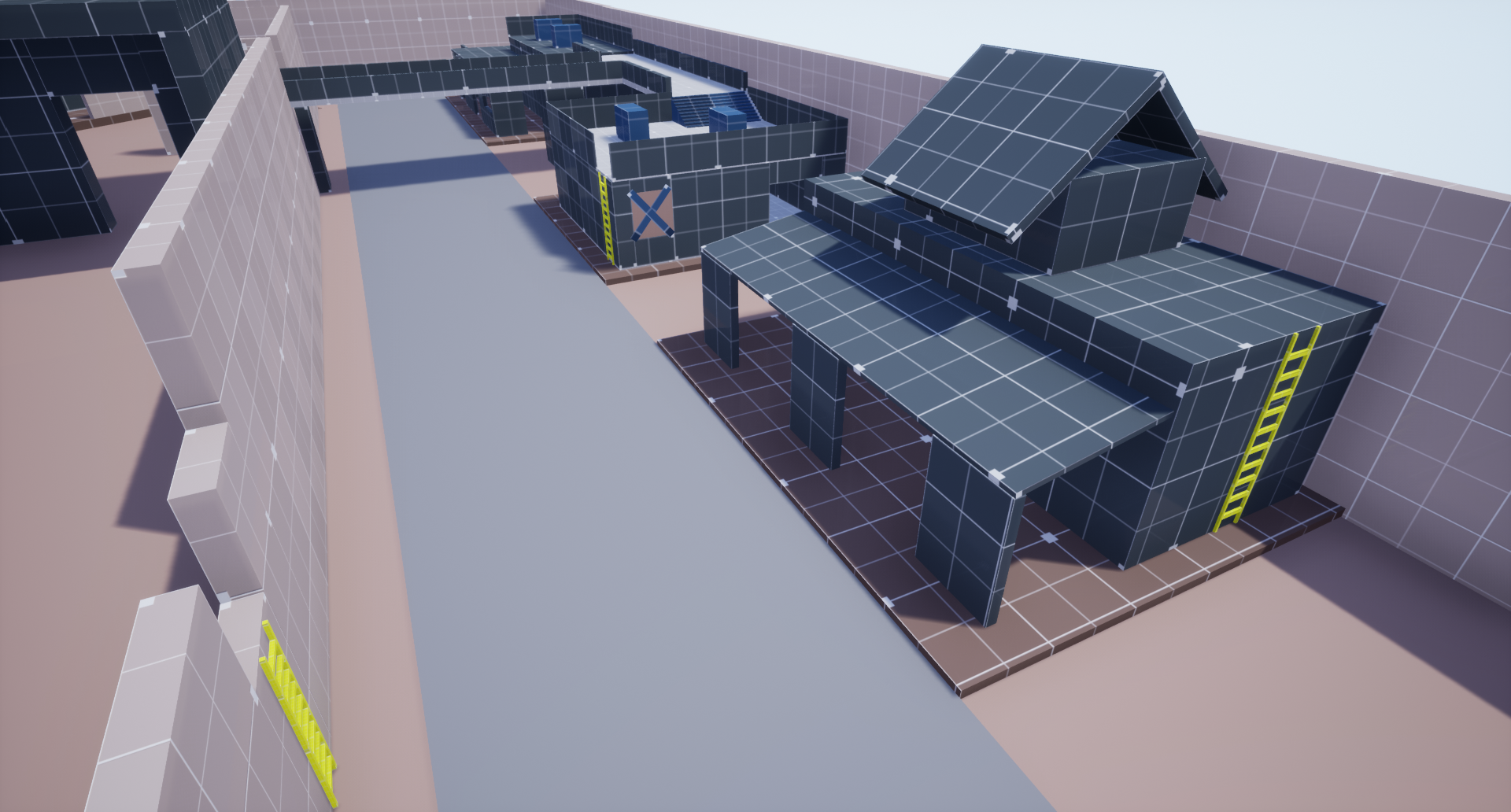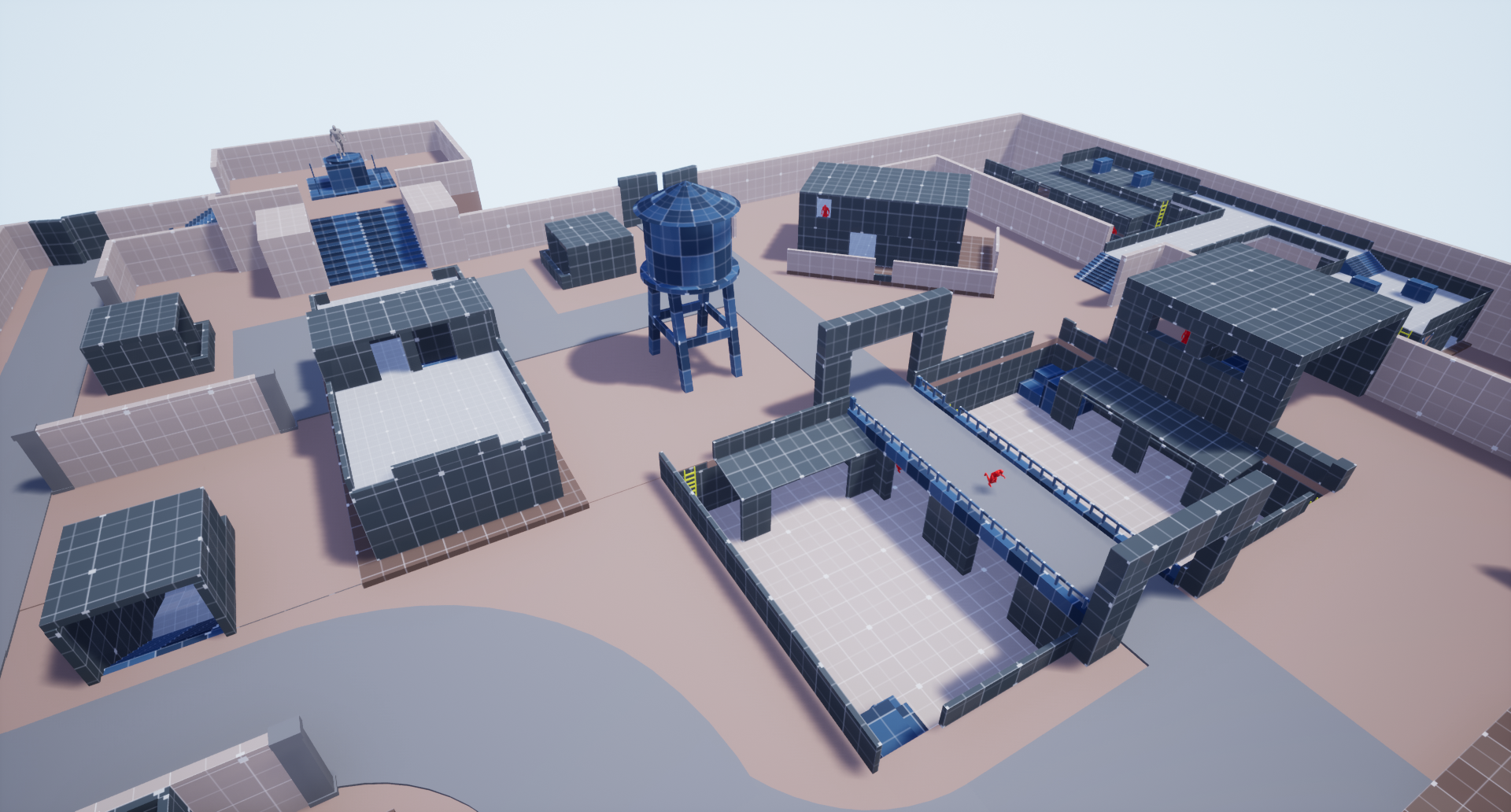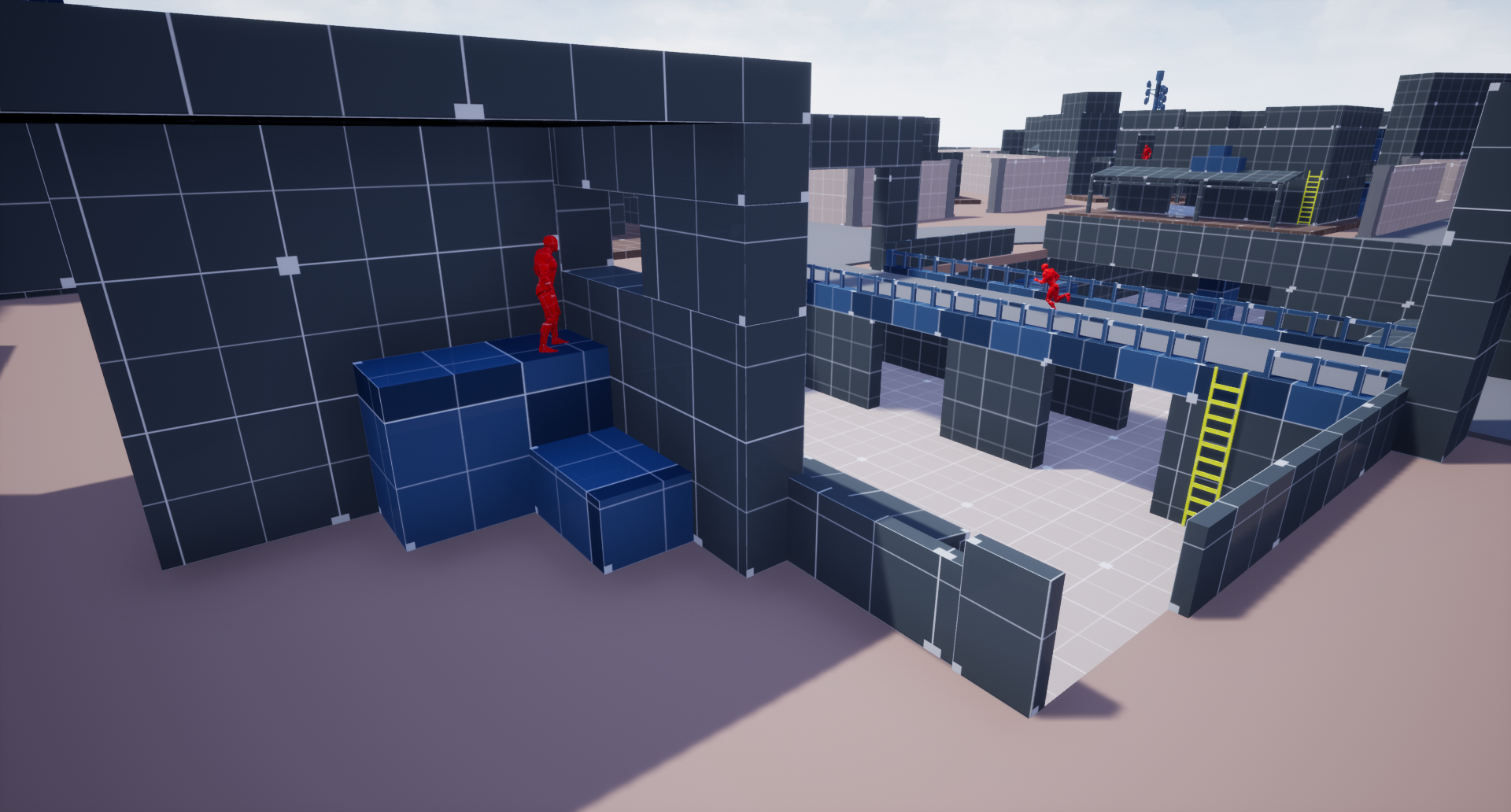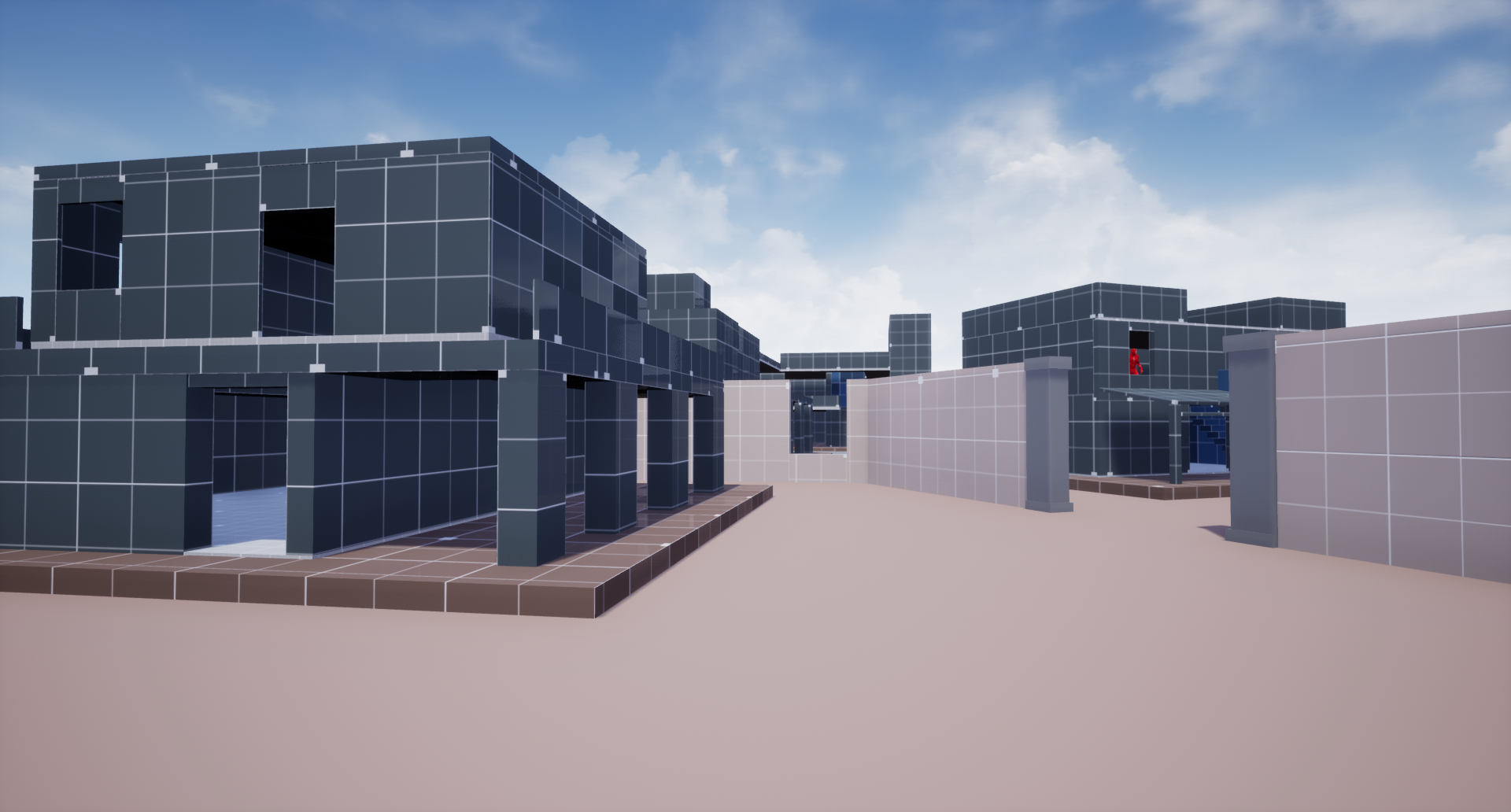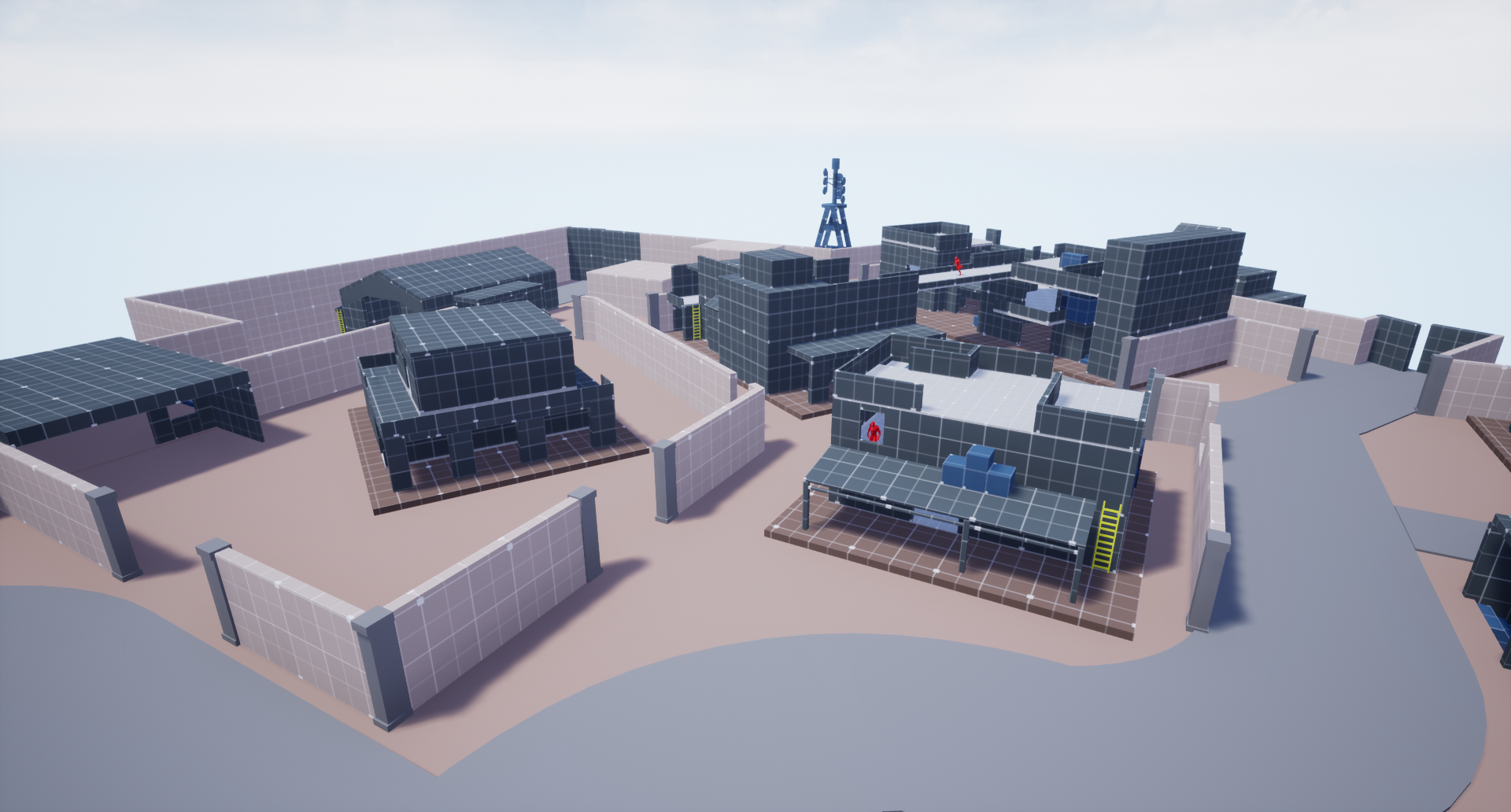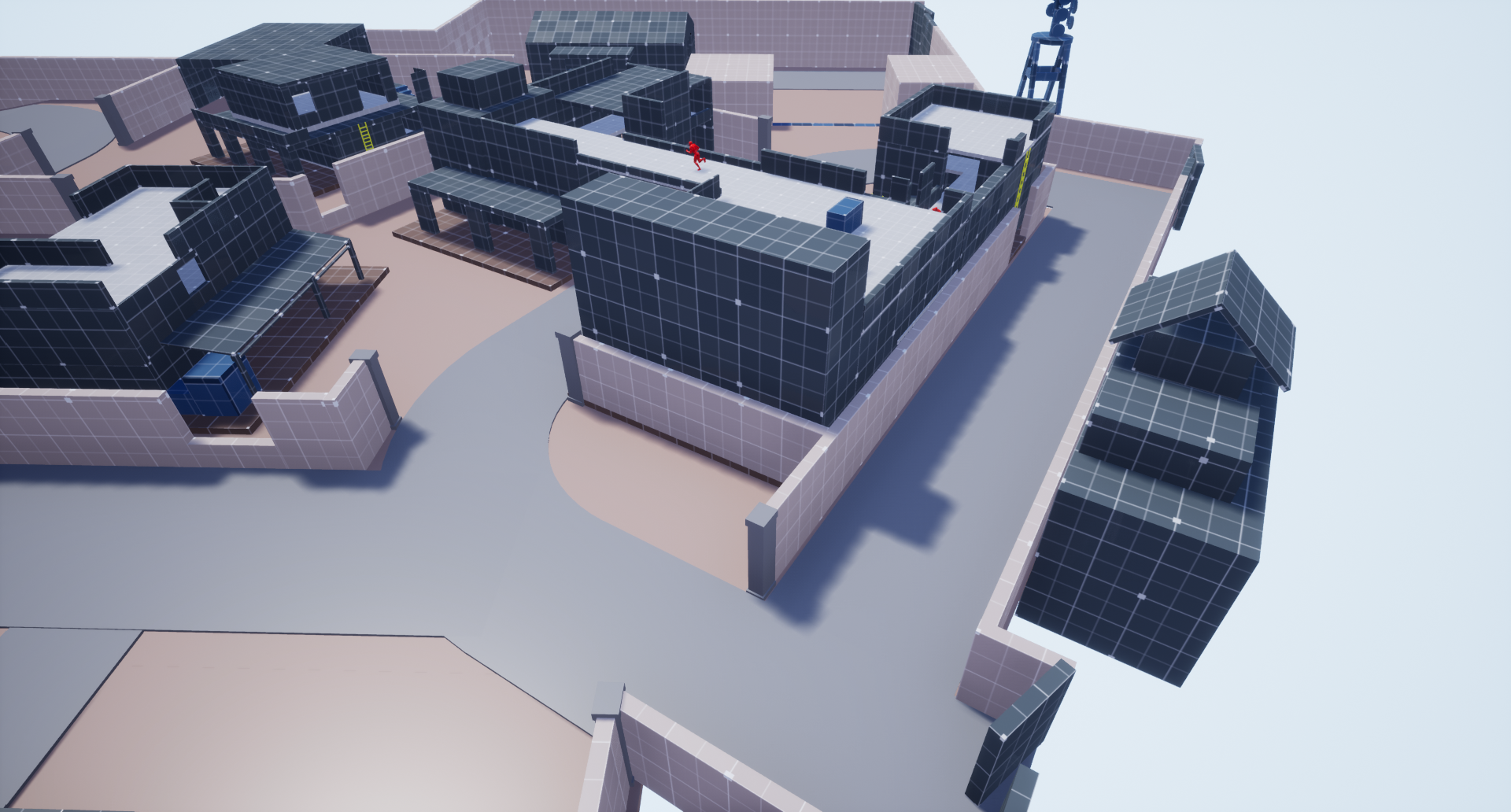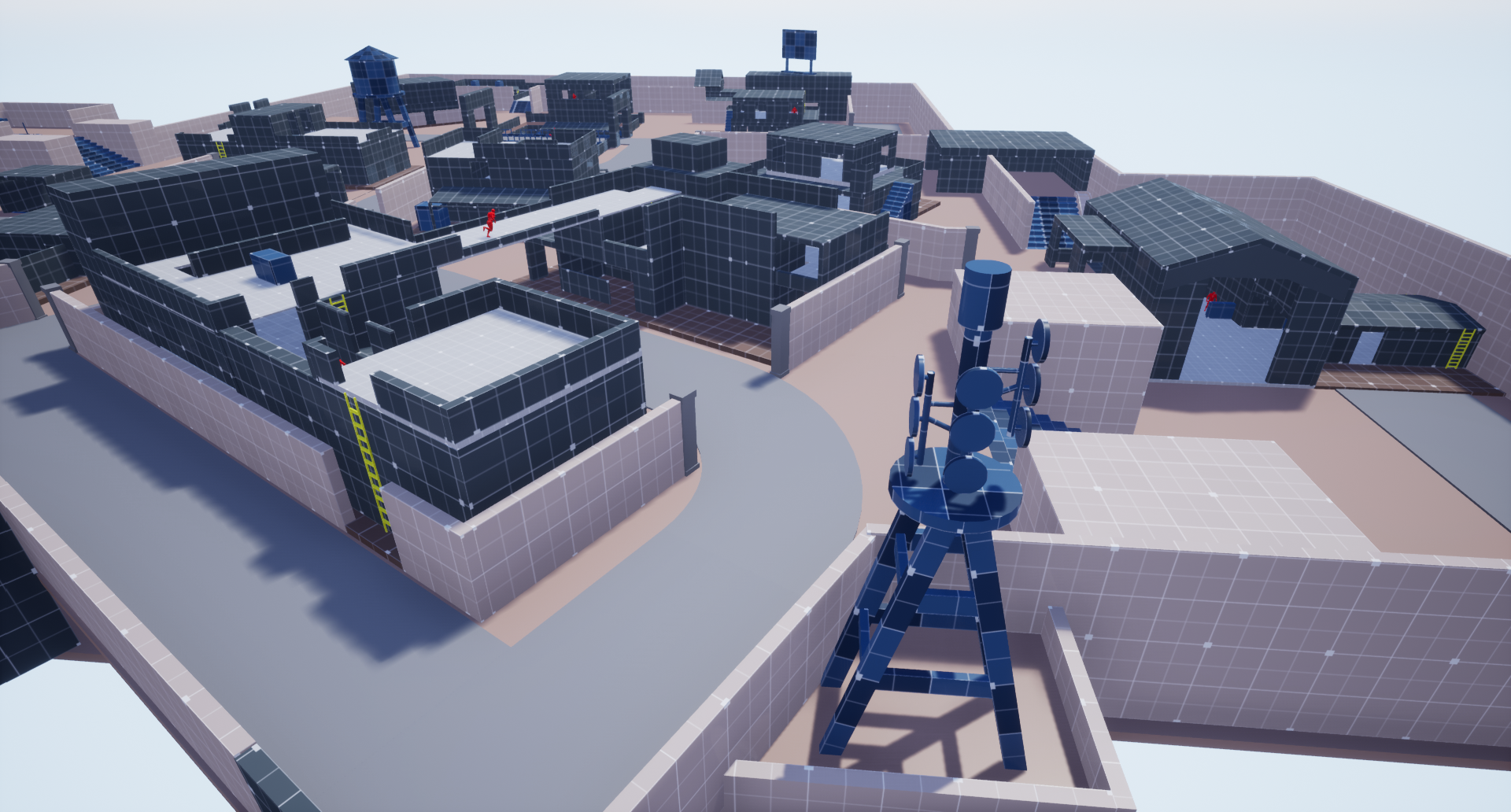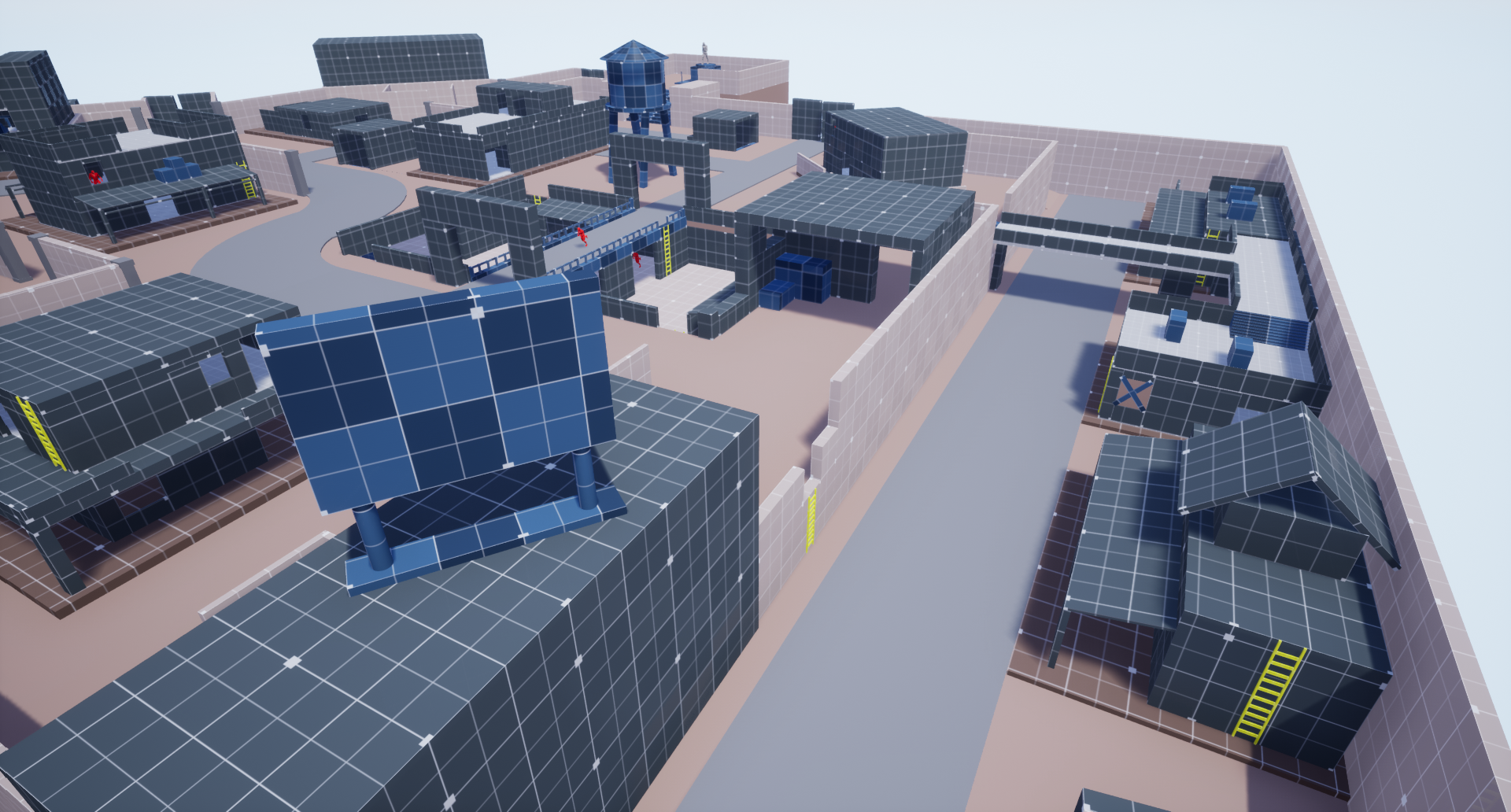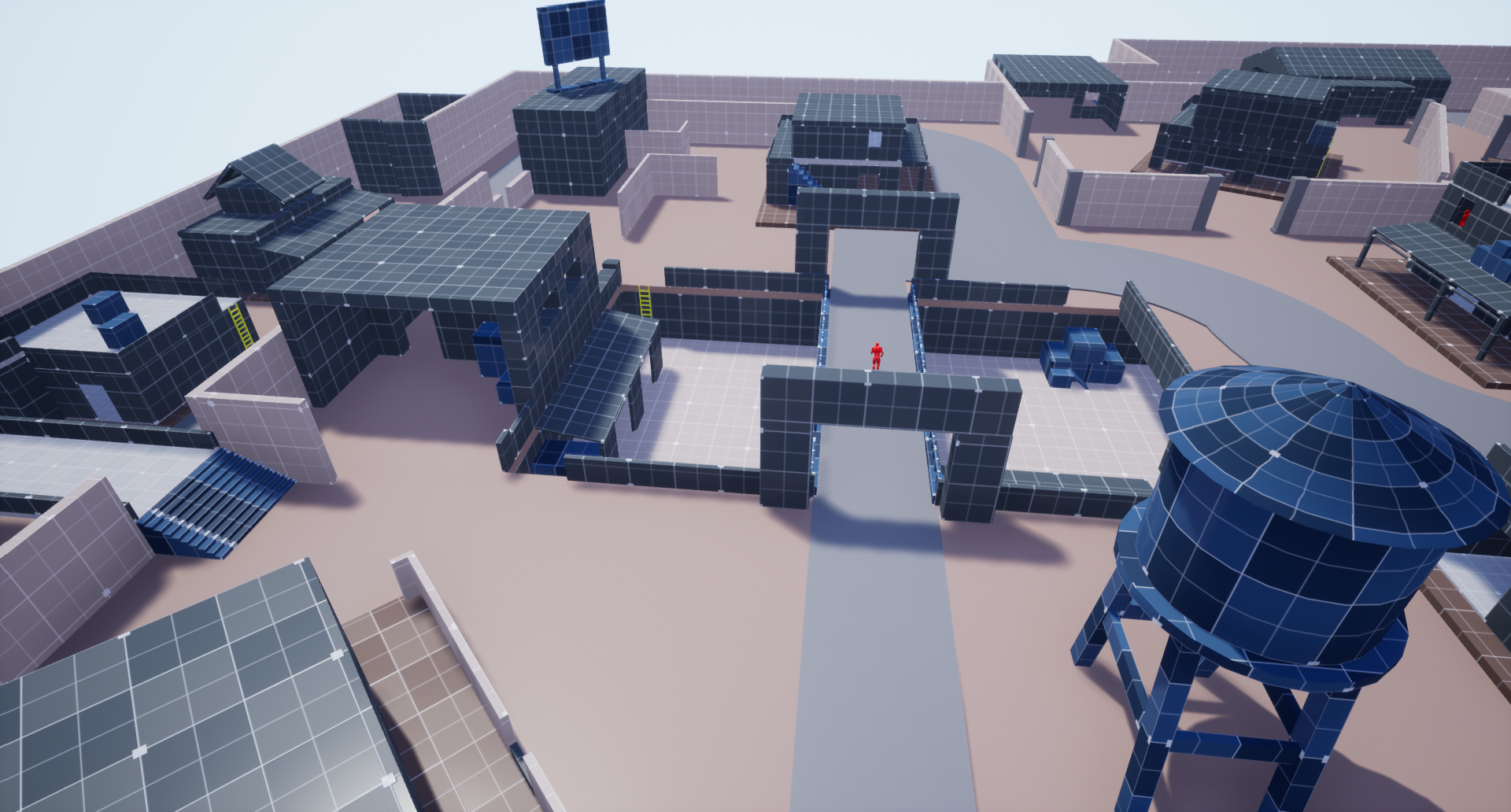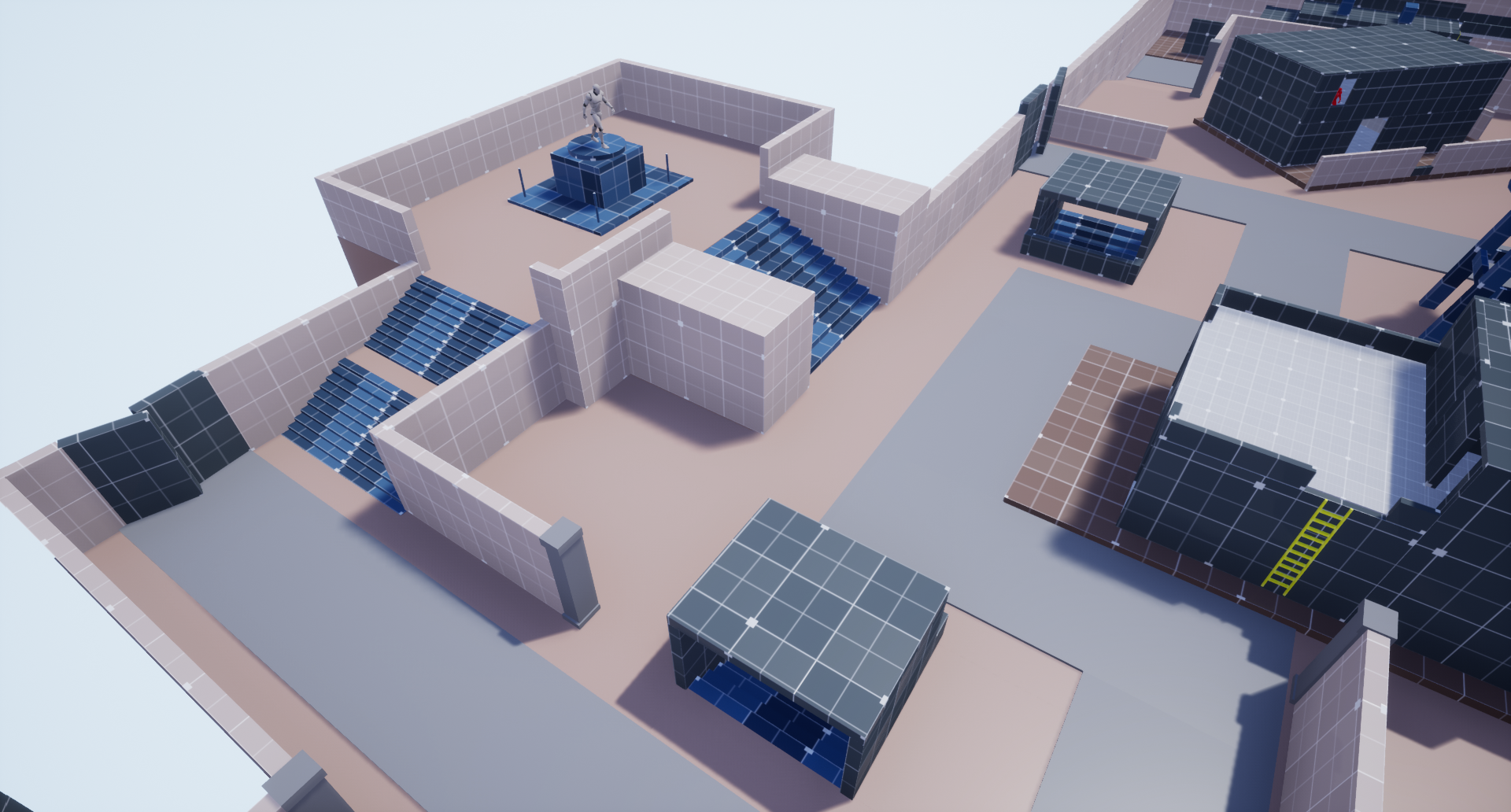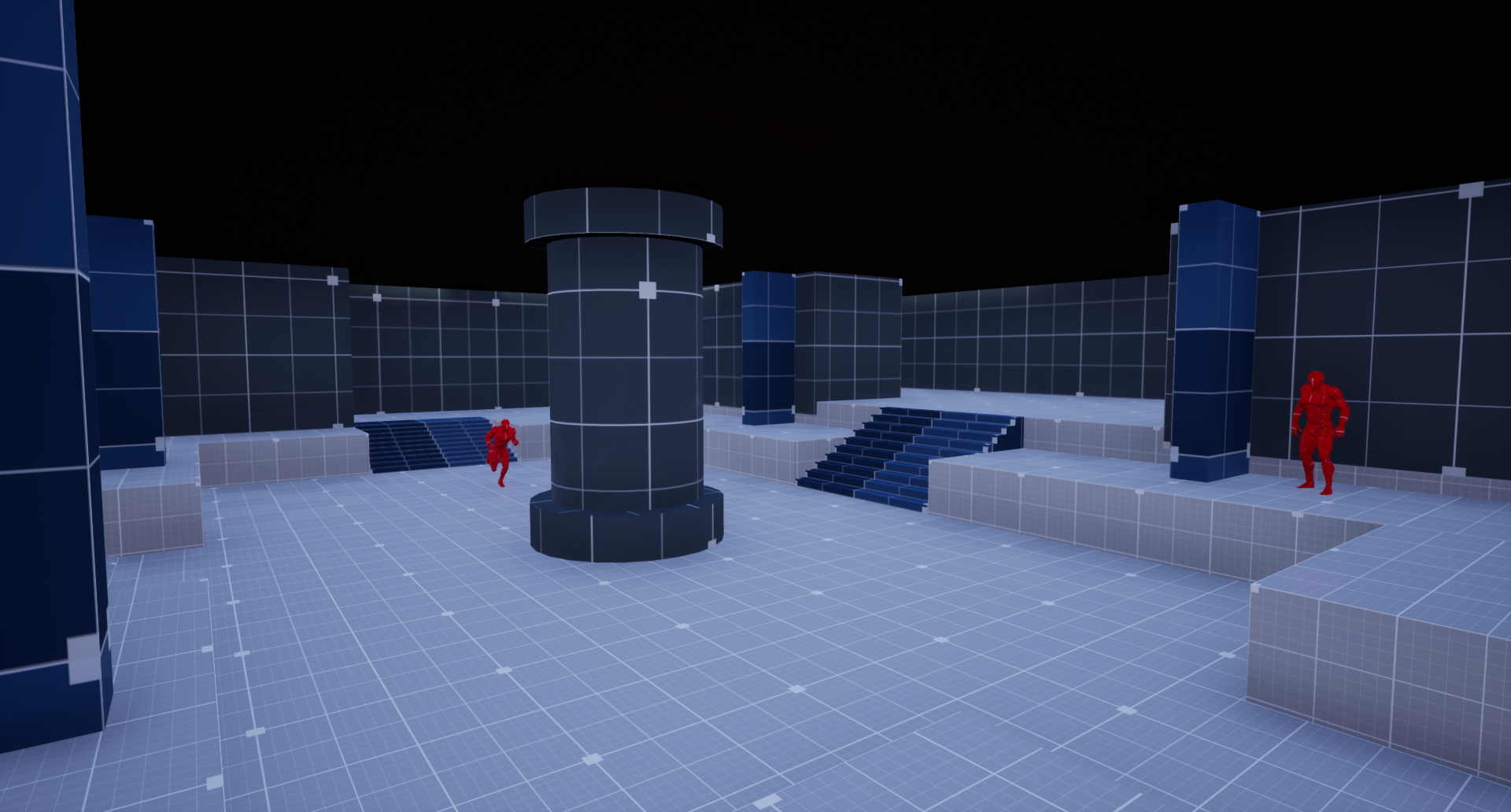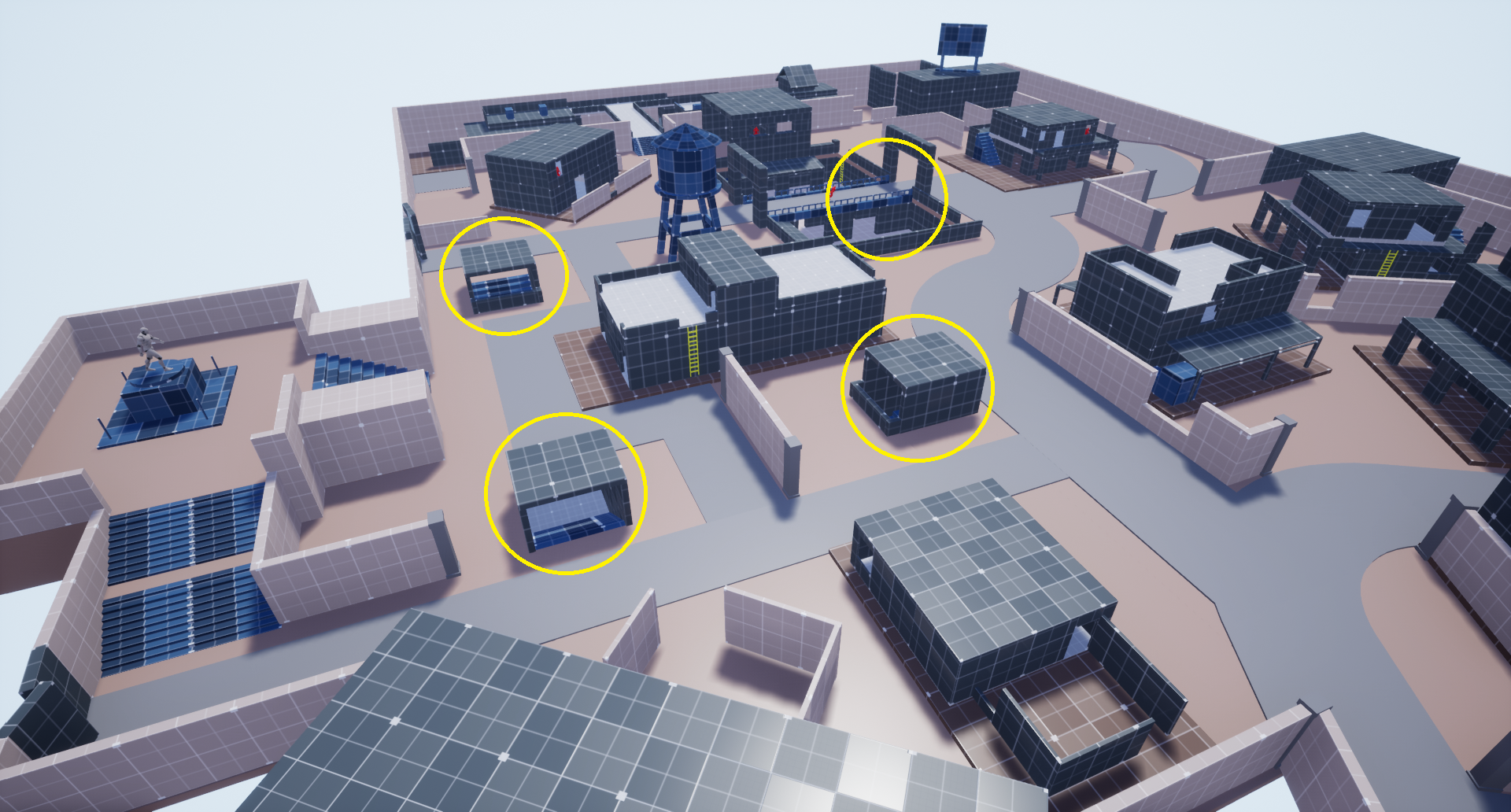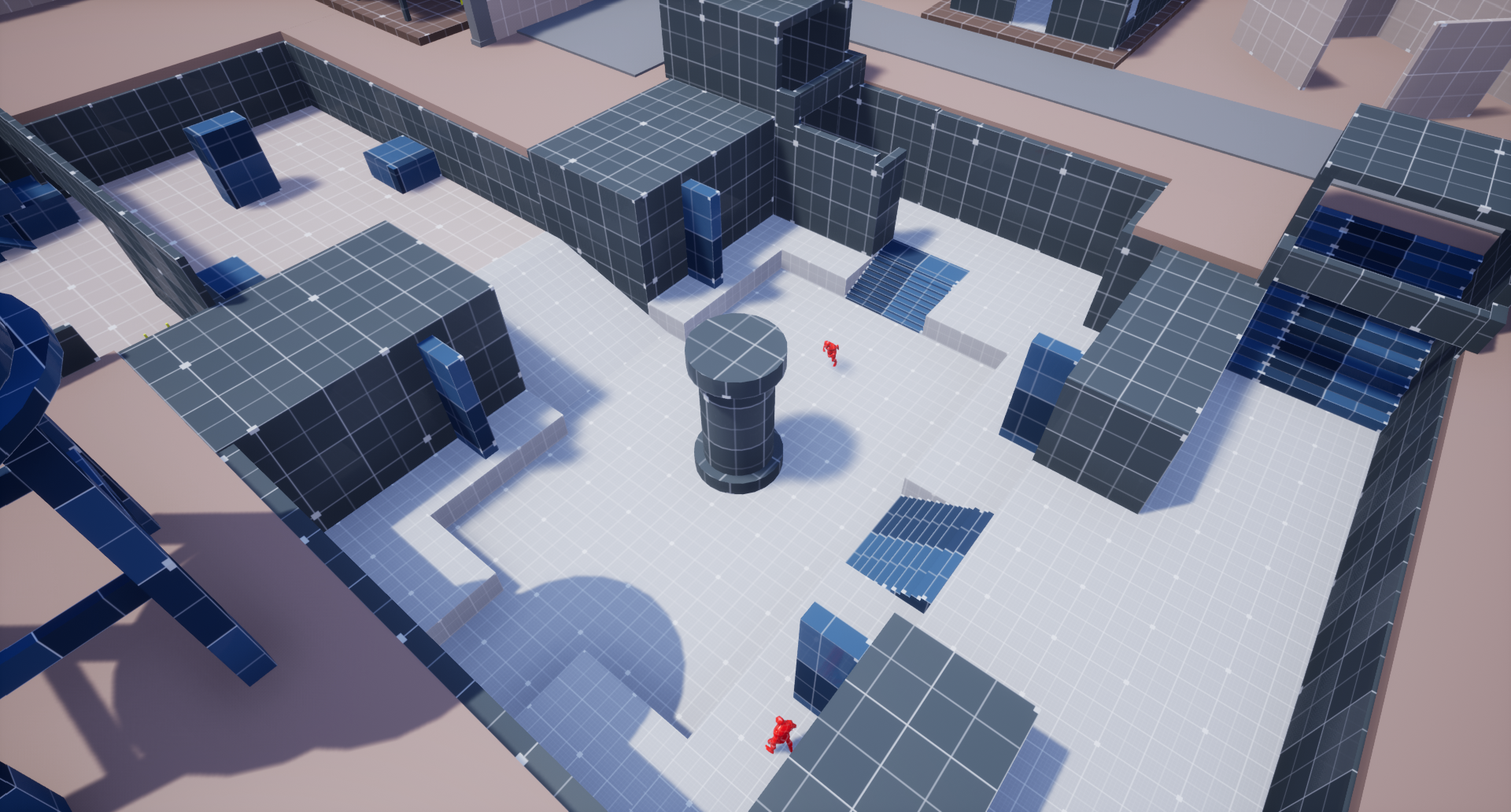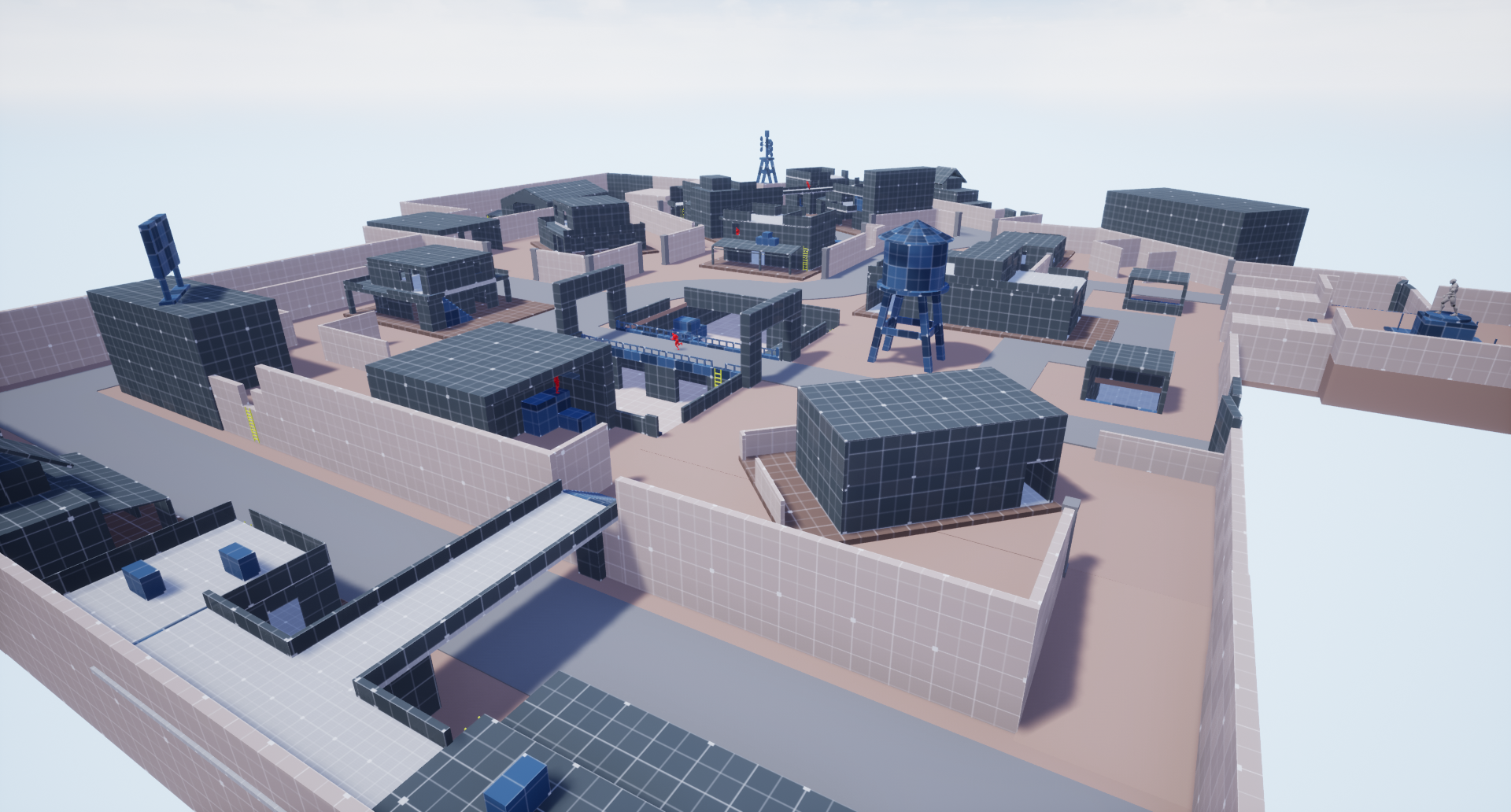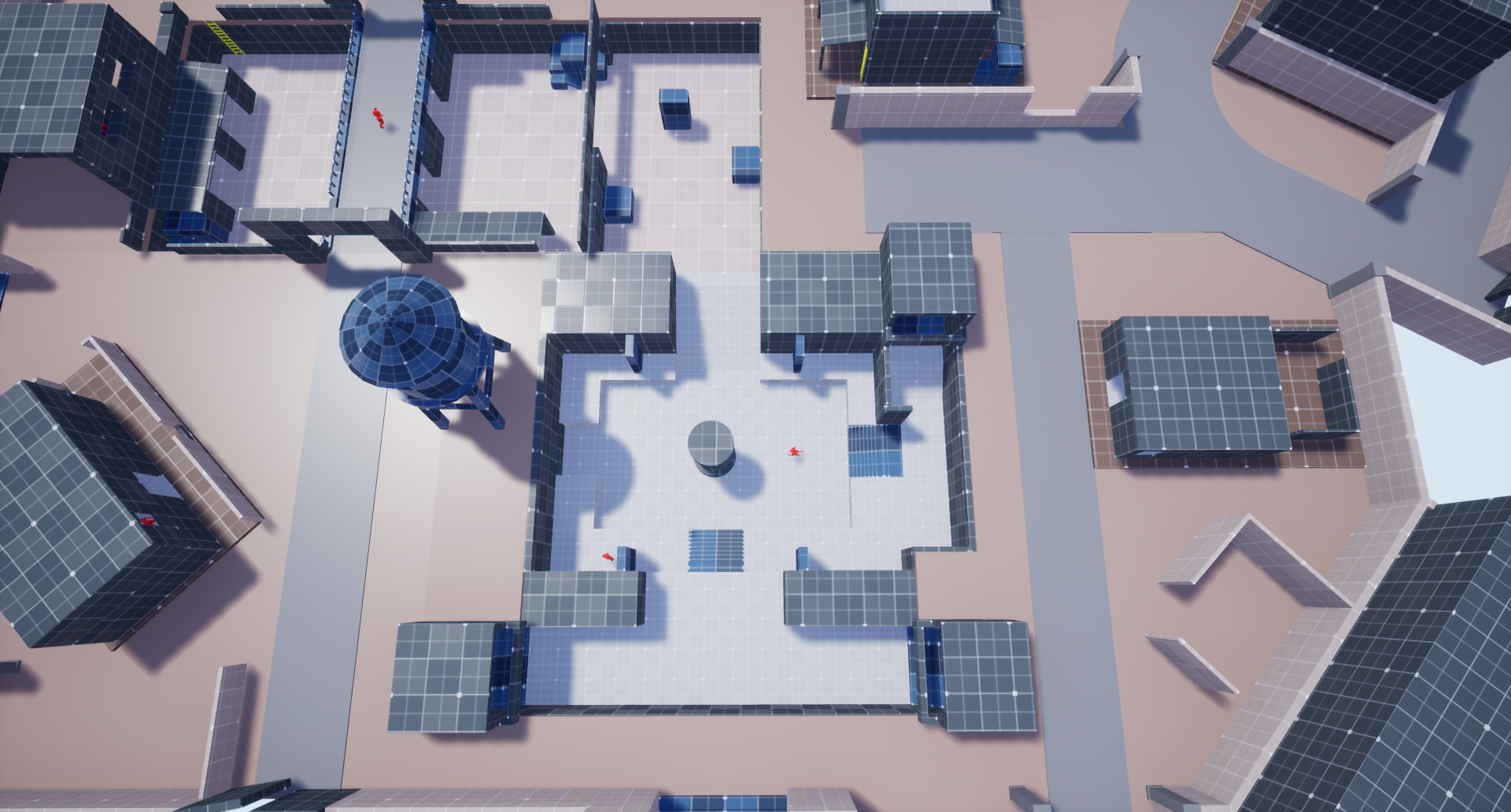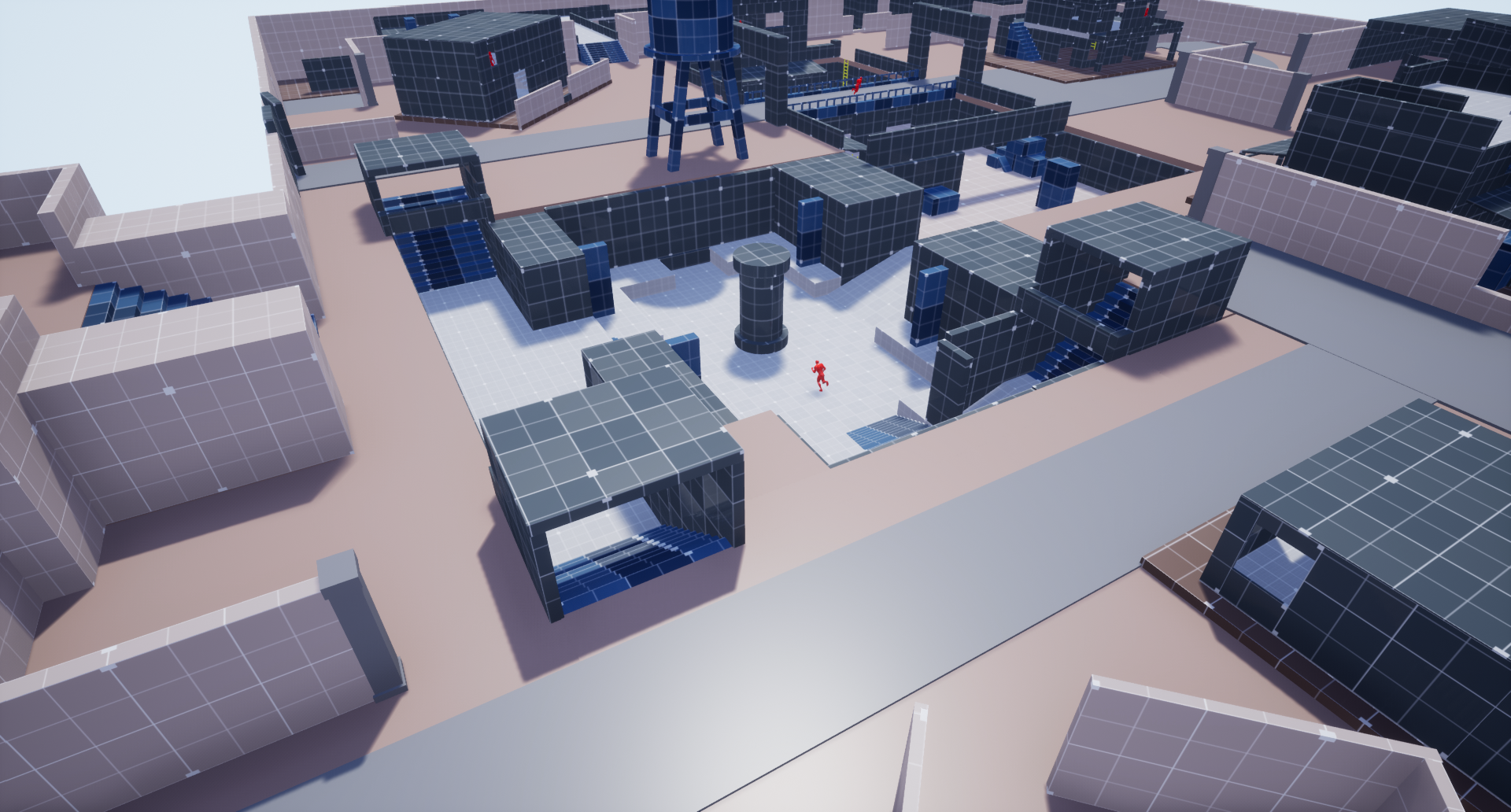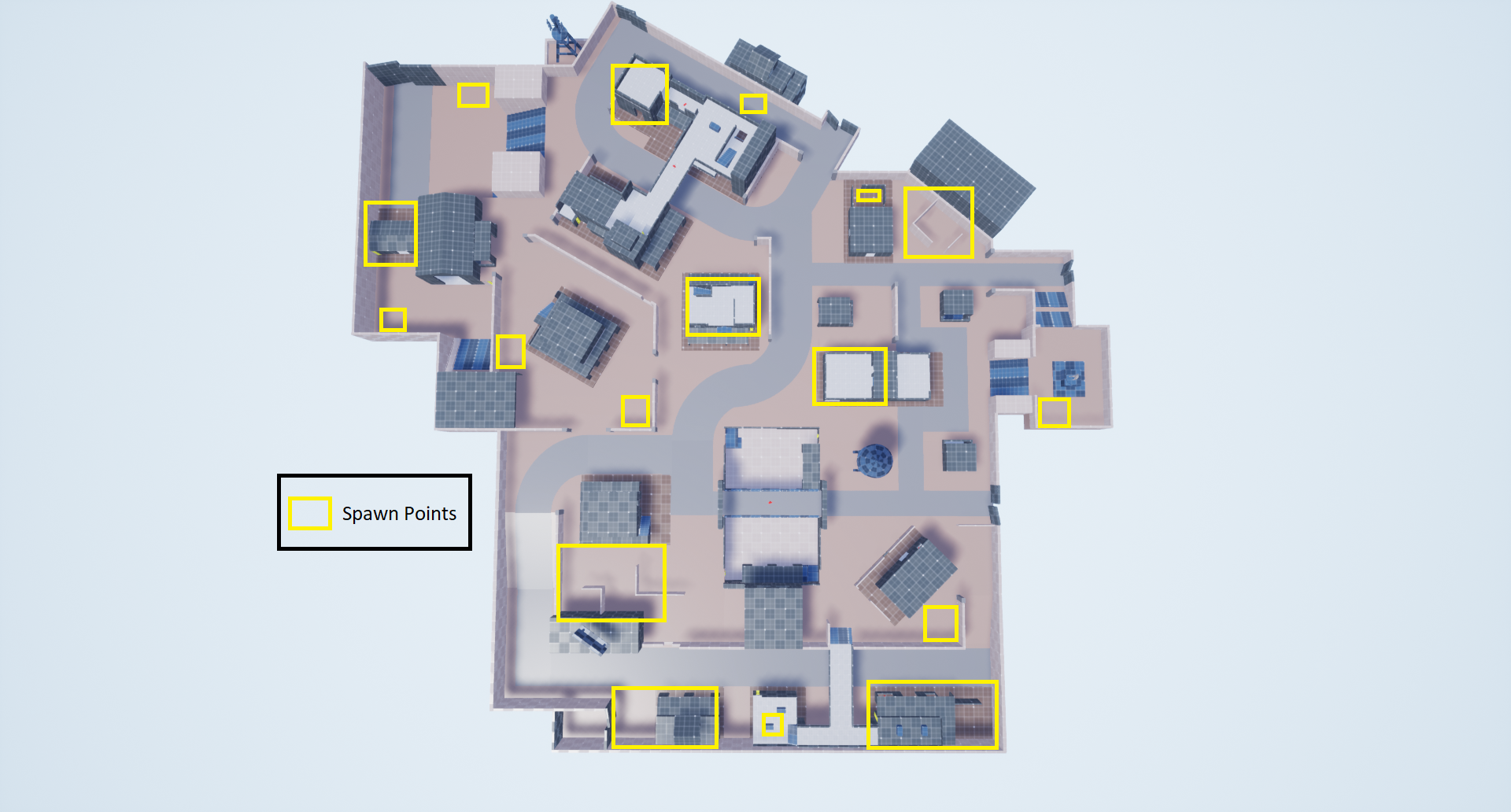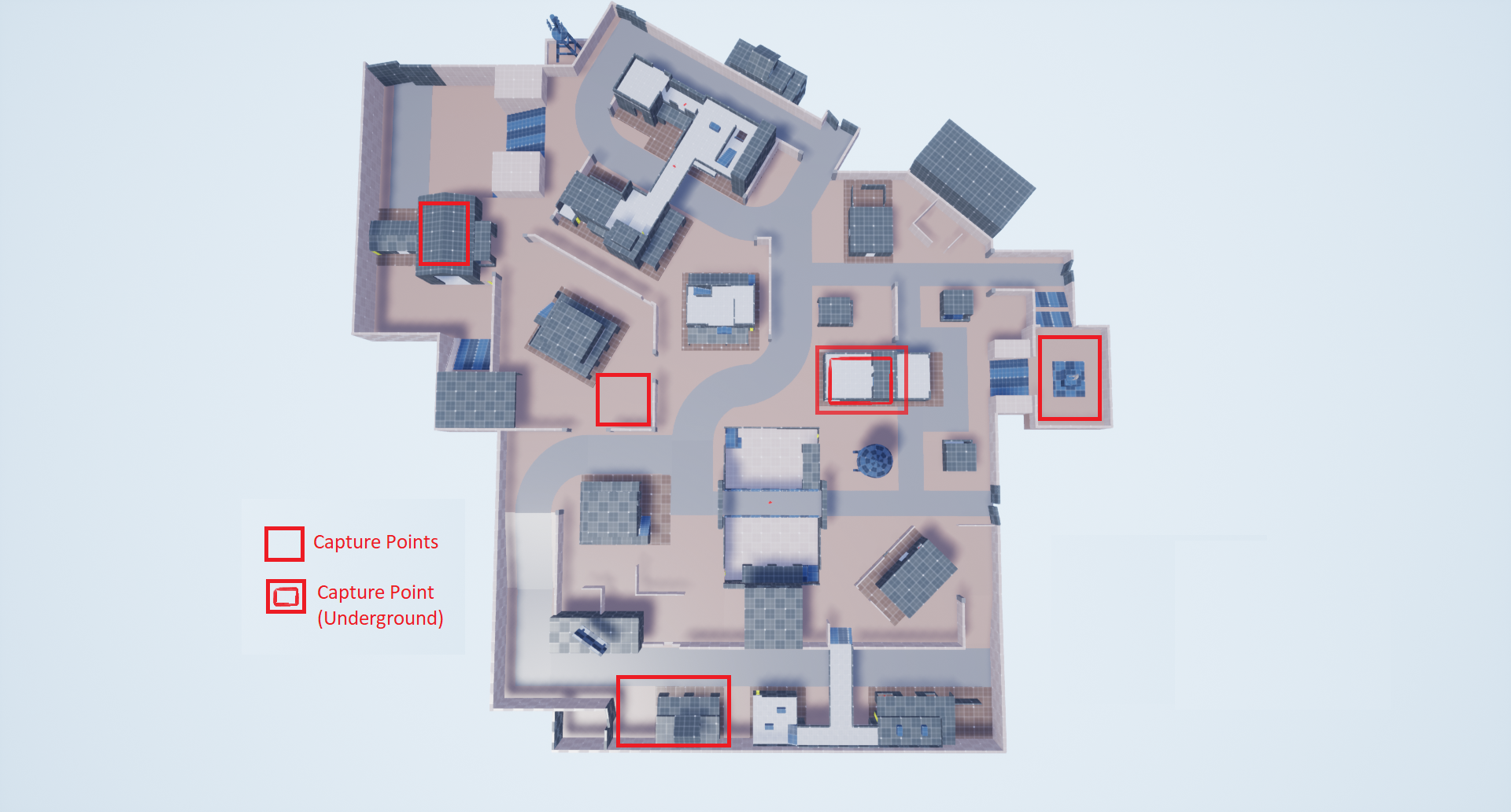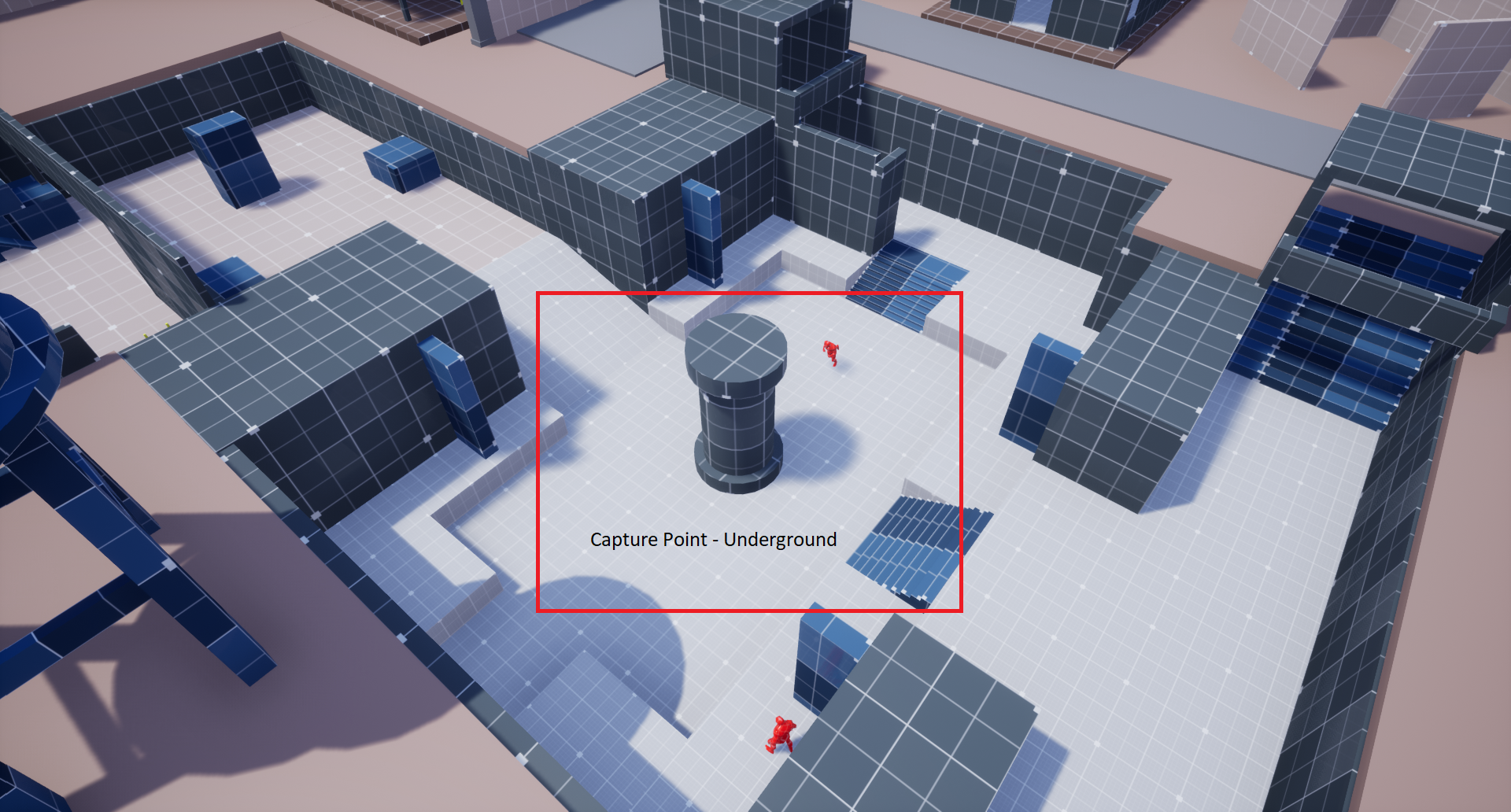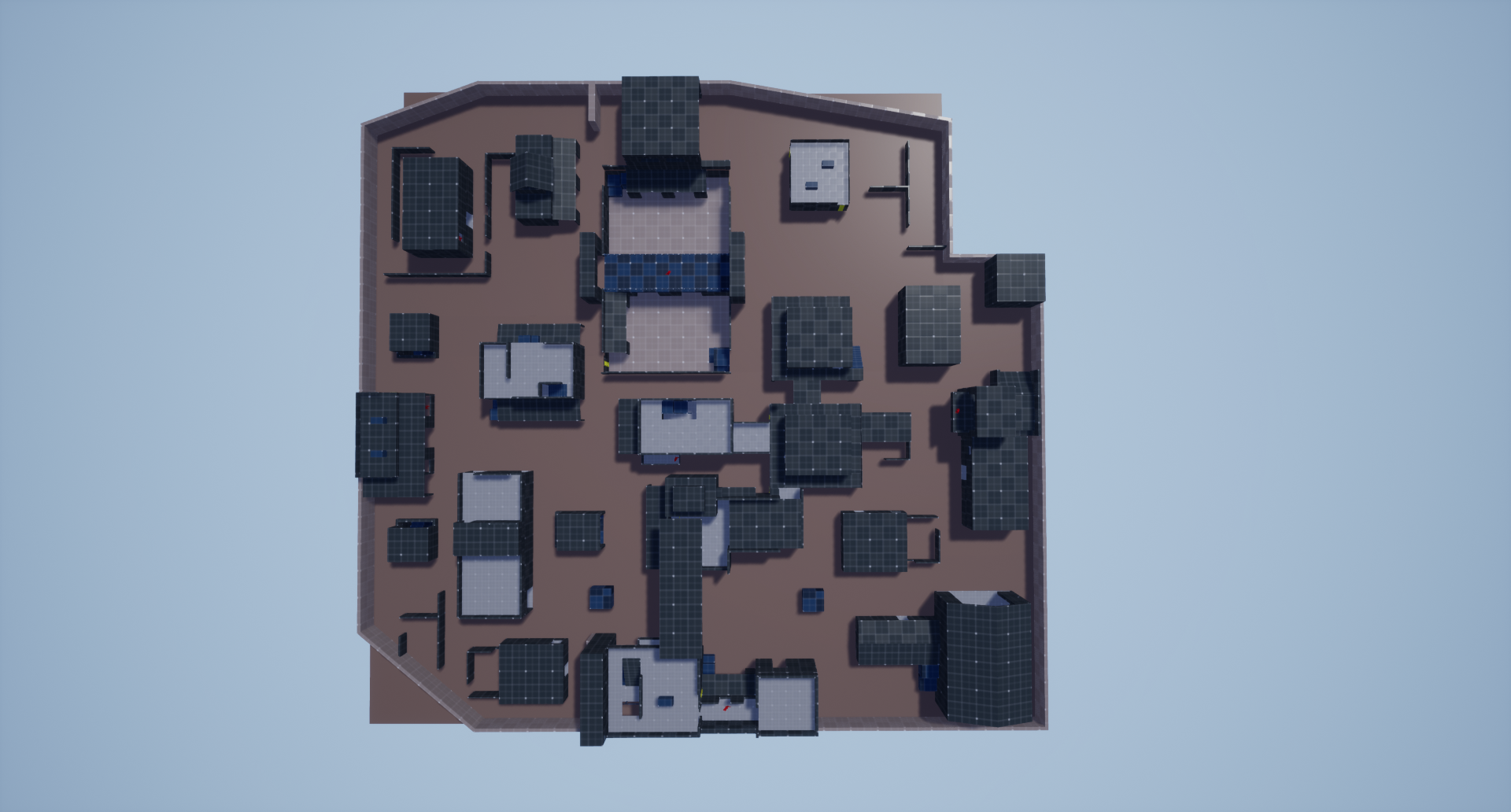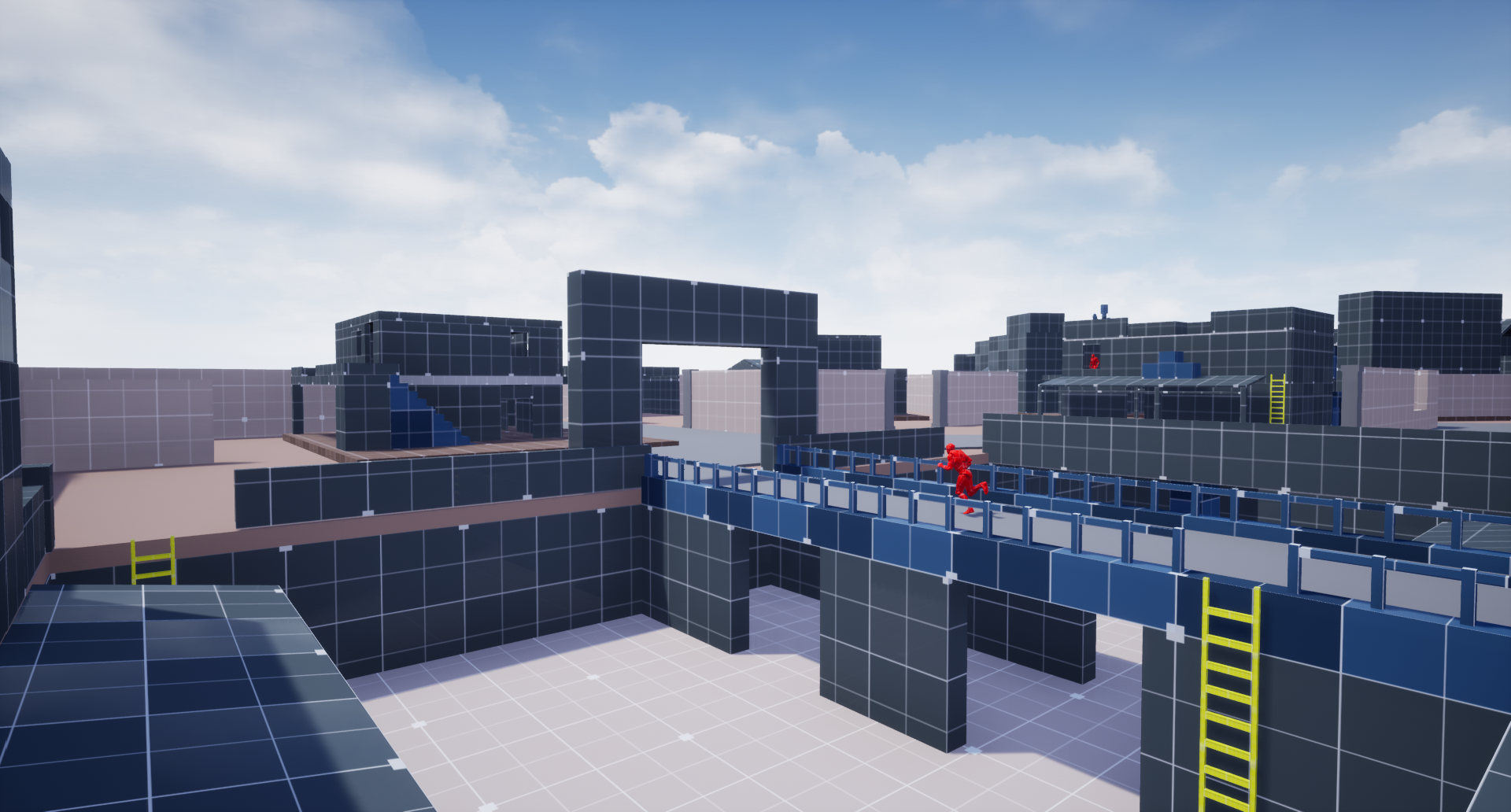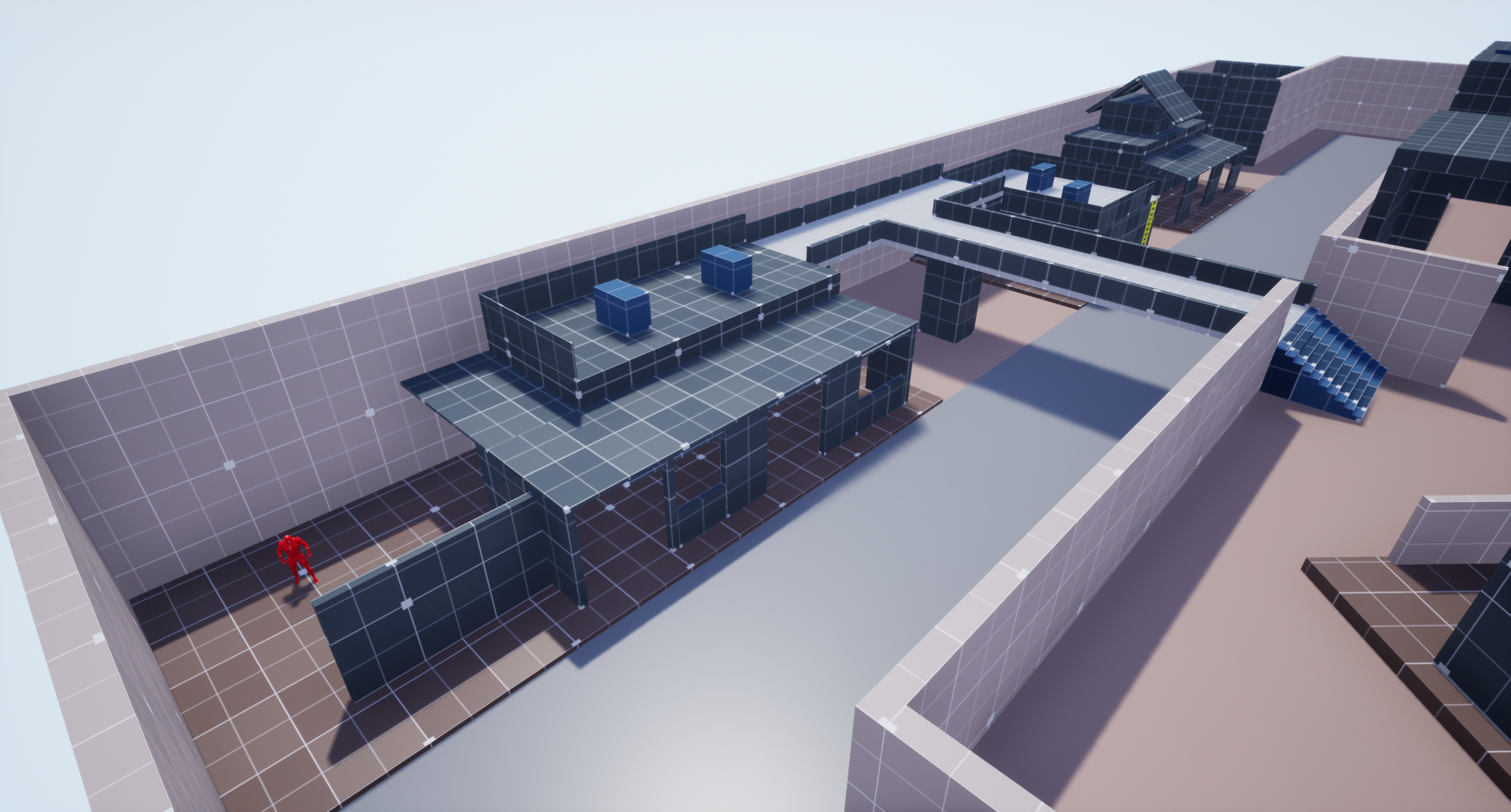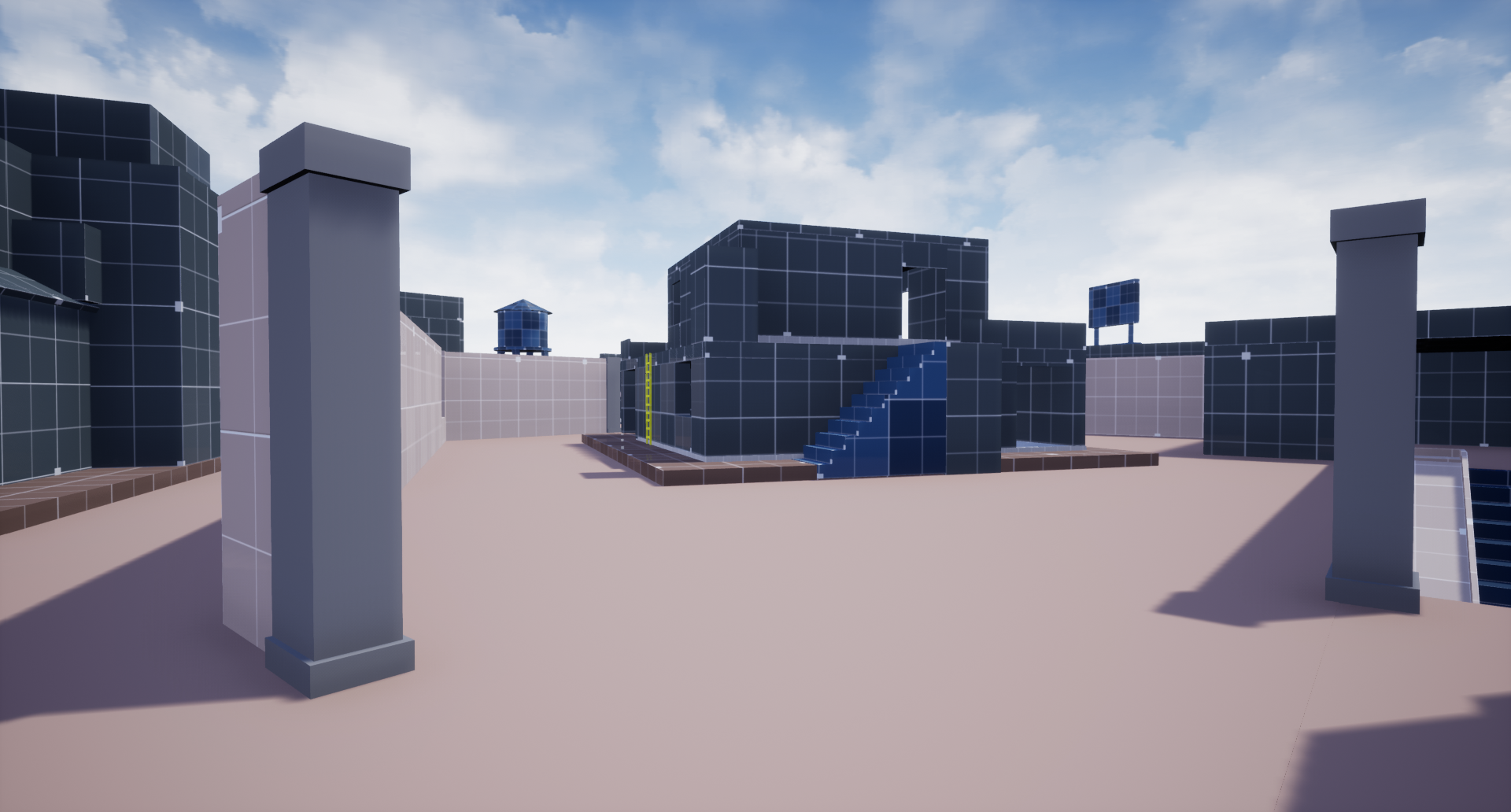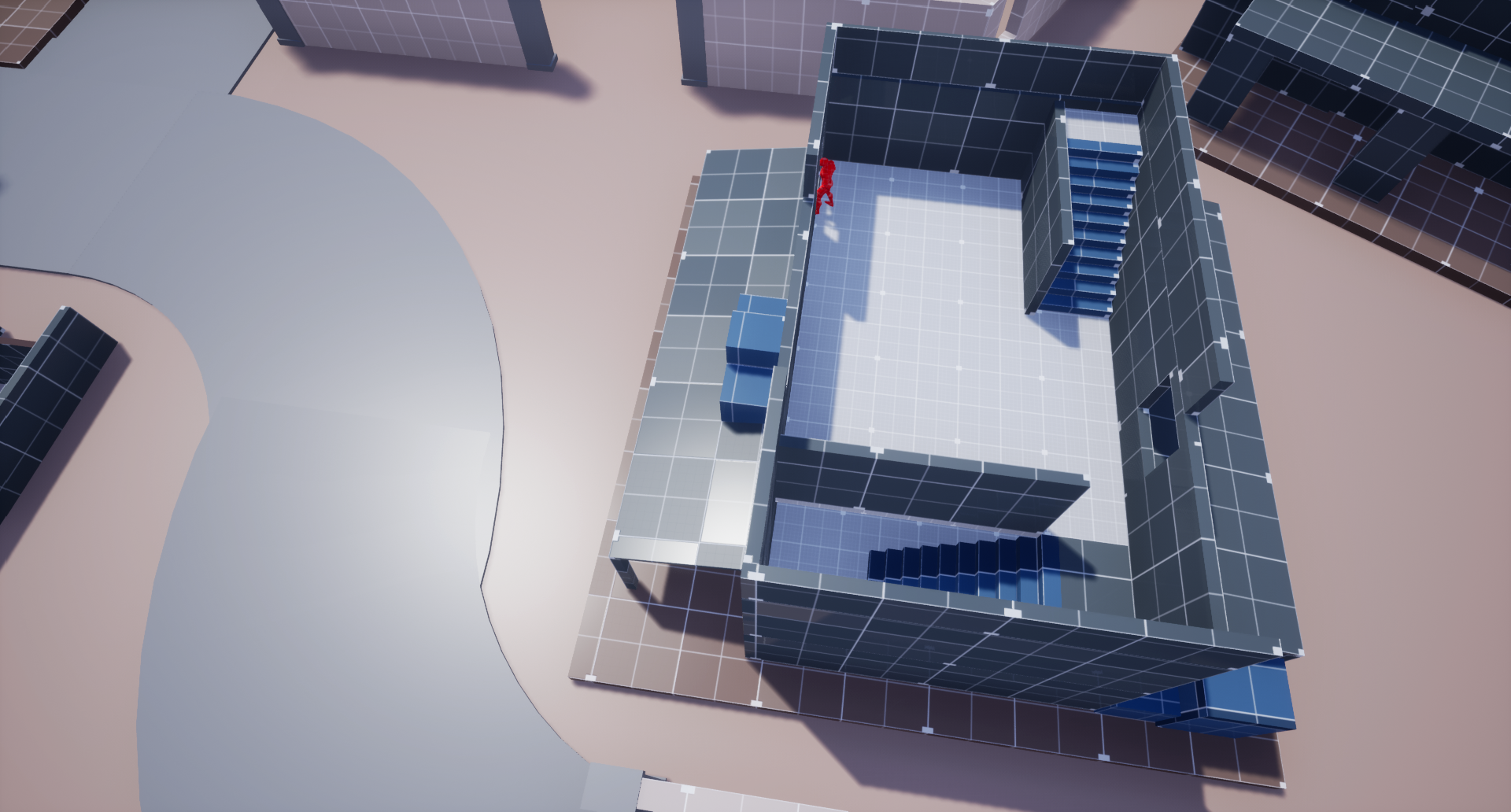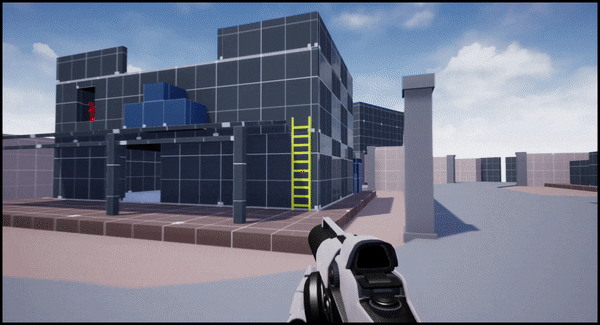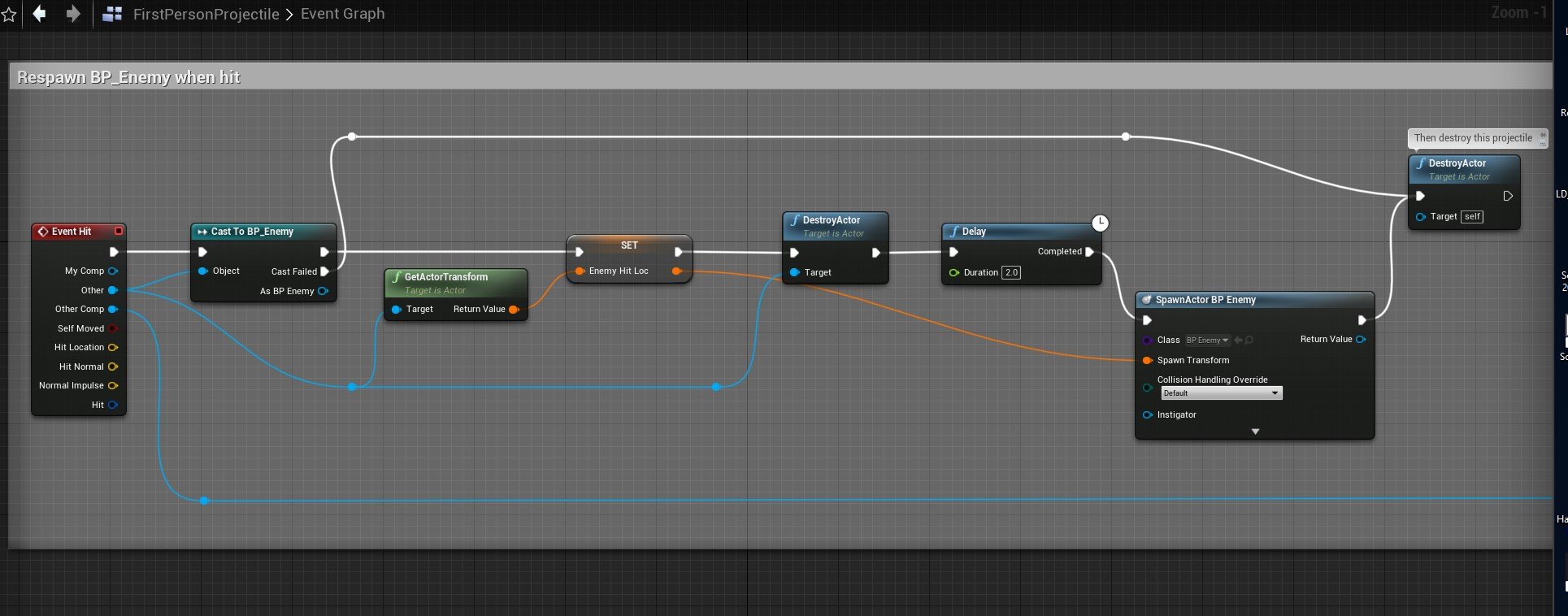Project Overivew
Team Size: One
Genre: First-Person Shooter.
Setting: This level is set in a small suburb environment supporting both long-range and close-quarter combat. Best suited for Free-for-All mode (ideally 8 players) and Team Deathmatch (ideally for 5v5 battles).
I imagined this environment to be a small suburb on the outskirts of a much larger city. The suburb’s backdrop would have high skylines of the city on one side, mountains fading into the distance and open lands forming the rest of the backdrop.
Asset packs used: SuperGrid Starter pack (tool for white boxing and applying grid materials).
Software: Unreal Engine 4.27
Time frame: The project was part of an assignment in the Level Design course at FIEA (Florida Interactive Entertainment Academy) and was completed over a period of 10 days. The level’s white boxing was completed in 6 days (totaling 21 hours). Conceptualizing and drafting the map took 3 hours. This project was not blueprints heavy and took about one hour to implement all the basic blueprints such as respawning enemies and crouch functionality.
Design Inspirations: For this level, I've spent most of my research time studying multiplayer maps from the Call of Duty Franchise. In particular, ‘Crash’ from the Modern Warfare series and ‘Slums’ from the Black Ops series have been the inspiration for some of my design decisions.
